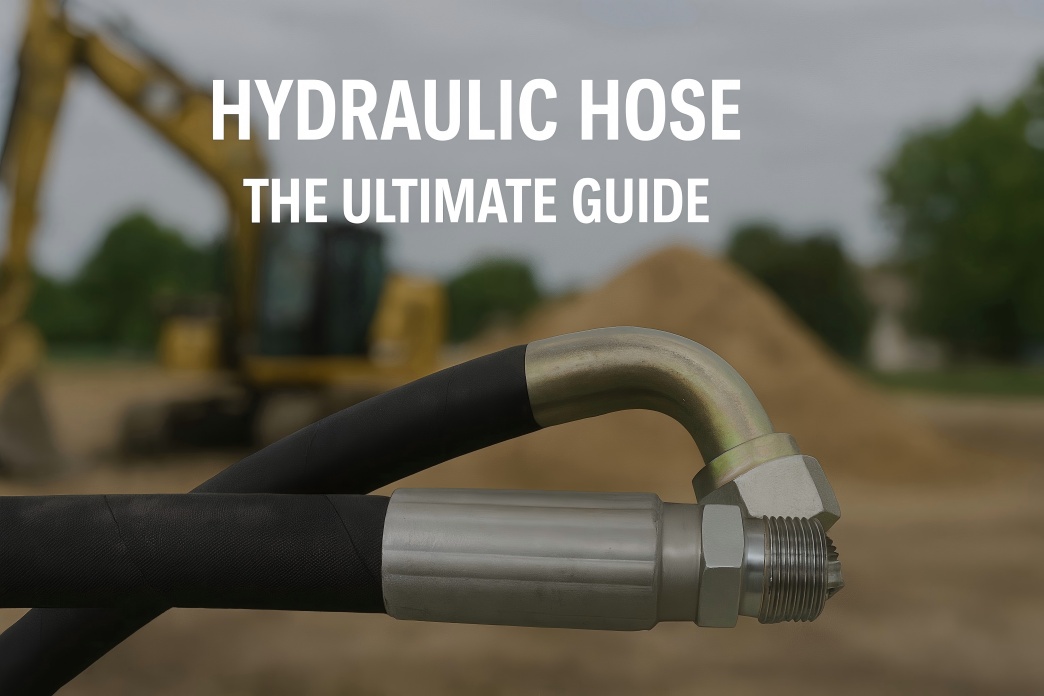The Ultimate Guide to Hydraulic Hoses: Powering Modern Machinery with Reliability
Introduction
Hydraulic hoses are the lifelines of heavy machinery, construction equipment, and industrial systems. They transport pressurized fluid to generate motion, control mechanisms, and power hydraulic tools. Choosing the right hydraulic hose ensures efficiency, safety, and longevity in demanding environments.
In this guide, we’ll explore:
What Are Hydraulic Hoses?
Hydraulic hoses are flexible, reinforced tubes that transmit hydraulic fluid between components like pumps, cylinders, and valves. They must handle high pressure, temperature fluctuations, and mechanical stress without leaking or bursting.
Core Components:
Inner Tube – Oil resistant synthetic rubber for smooth fluid flow
Reinforcement Layer – Steel wire braid/spiral or textile braid for pressure resistance.
Outer Cover – Abrasion and weather resistant synthetic rubber
Types of Hydraulic Hoses
Different applications require specific hose types. The most common classifications are based on SAE, EN, and DIN standards:
SAE Standard Hoses
SAE 100R1 / 100R2 – 1-2 steel wire braids
SAE 100R12 / 100R13 / SAE 100R15 – High pressure spiral steel wire hose
EN Standard Hoses
EN 853 – 1SN (1 braid), 2SN (2 braids).
EN 856 – 4SP, 4SH(4 spirals)
Specialty Hoses
Thermal-Resistant – For foundries or high-heat environments.
Conductive – Prevents static buildup in flammable settings.
Chemical-Resistant – Handles acids, solvents, and fuels.
Key Features of a High-Quality Hydraulic Hose
A reliable hydraulic hose should offer:
✔ High Pressure Rating (1,000 – 6,000 PSI, depending on reinforcement).
✔ Flexibility – Resists kinking while maintaining flow efficiency.
✔ Abrasion Resistance – Tough outer cover for rough environments.
✔ Temperature Range (-40°C to +120°C for standard hoses).
✔ Compatibility – Works with hydraulic oils, HFA, HFC fluids.
✔ Certifications – ISO 9001, SAE, DIN, and RoHS compliance.
Common Applications of Hydraulic Hoses
Hydraulic hoses power industries worldwide, including:
Construction & Mining
Excavators, bulldozers, and cranes rely on high-pressure hoses (EN 856 4SP/4SH).
Agriculture
Tractors, harvesters, and irrigation systems use flexible, weather-resistant hoses (SAE 100R1/2).
Oil & Gas
Offshore rigs and hydraulic fracturing demand corrosion-resistant, high-temp hoses.
Industrial Machinery
CNC machines, presses, and automation systems need precision hydraulic lines.
How to Select the Right Hydraulic Hose
Choosing the correct hose prevents failures and costly downtime. Consider:
Pressure Requirements
Match the hose’s working pressure to your system’s max PSI.
Temperature Range
Extreme cold or heat affects hose flexibility and lifespan.
Fluid Compatibility
Ensure the inner tube material resists oil, water-glycol, or synthetic fluids.
Size & Length
Inner Diameter (ID) affects flow rate.
Bend Radius must accommodate movement.
Reinforcement Type
Wire Braid (SAE 100R1/2) – General use.
Spiral Wire (SAE 100R15/EN 856) – High pressure applications.
Maintenance & Safety Tips
✅ Inspect Regularly – Check for cracks, leaks, or abrasions.
✅ Avoid Twisting – Improper routing causes premature failure.
✅ Use Protective Sleeves – Shields hoses from friction and heat.
✅ Replace Worn Hoses – A burst hose can lead to equipment damage or injuries.



